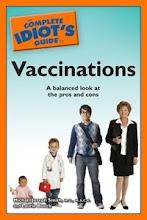Wednesday, April 13, 2011
RFID tags in Medicine
RFID tags are gaining traction in medicine. Surgeons can use "smart" sponges embedded with RFID tags in the operating room, for example. Separate devices can electronically count the number of sponges used and scan the surgical site to make sure none are left in the body, where they can cause pain, infections, and other problems. RFID-embedded identification bracelets placed on infants in maternity wards and linked to alarms prevent unauthorized people from taking the infants from the area.
Outside the hospital wards, RFID-tagged pharmaceutical containers make it easier for the FDA to track the drugs' movement (especially the movement of controlled substances such as the pain reliever OxyContin) and to verify that the drugs are not counterfeit. Some paper medical records have been RFID-tagged to help health care workers find misplaced files.
The Affordable Care Act encourages the use of technology such as electronic medical records and RFID tags to improve medical care and (not coincidentally) to stretch health care dollars by decreasing administrative costs and other expenses. Technology like RFID chips, which can prevent expensive and damaging human errors, should remain just one tool used by health care providers, and does not relieve them of their responsibility to provide the best care they can. Tools can help them with data collection and analysis, but empathy, observation, and insight remain distinctly human, and necessary for good health care as well.
Monday, June 30, 2008
Good Technology, Bad Technology
When I pick up the phone, the friendly woman's voice greets me in Russian. Or maybe it's Romanian? Or Polish? Then she begins a long discussion about an upcoming medical appointment in the mystery language. I know this because she mentions my name and a local medical center in English. She calls about once a month, a glitch in some health care provider's electronic appointment reminder system.
Ah, medical information technology. I still can't decide whether I like it or not. At my daughter's pediatrician's office, I wonder why they're still using a giant, scribbled-over paper appointment book and paper folders to hold medical records. Then I remember that a shift to appointment scheduling software and electronic medical records could mean technology glitches like my periodic Russian phone calls and the imposition of a laptop screen between the doctor and me when we talked. On the other hand, I reason, it's incredibly useful when a doctor I'm visiting can pull up electronic test results from another doctor I saw recently. Yet this easy access is also creepily Orwellian. How many people, exactly, do have access to my medical information? And what are they doing with it?
Sometimes, medical IT practices can cause real harm. A recent article in JAMA analyzed how radio frequency identification (RFID) devices, used to identify patients and equipment, can also interfere with medical equipment used to treat and manage medical problems. My daughter and I received RFID wristbands when she was born, in order to make sure that no unauthorized person took her from the hospital. Could the wristbands’ signals have interfered with the lifesaving equipment used on the infants in the neonatal ICU down the hall? Possibly, according to JAMA.
As I sort through my own opinions about information technology and medicine, the technology marches forward relentlessly. At the moment, the Markle Foundation, a public/private collaborative studying IT, health, and national security issues and endorsed by WebMD, the



